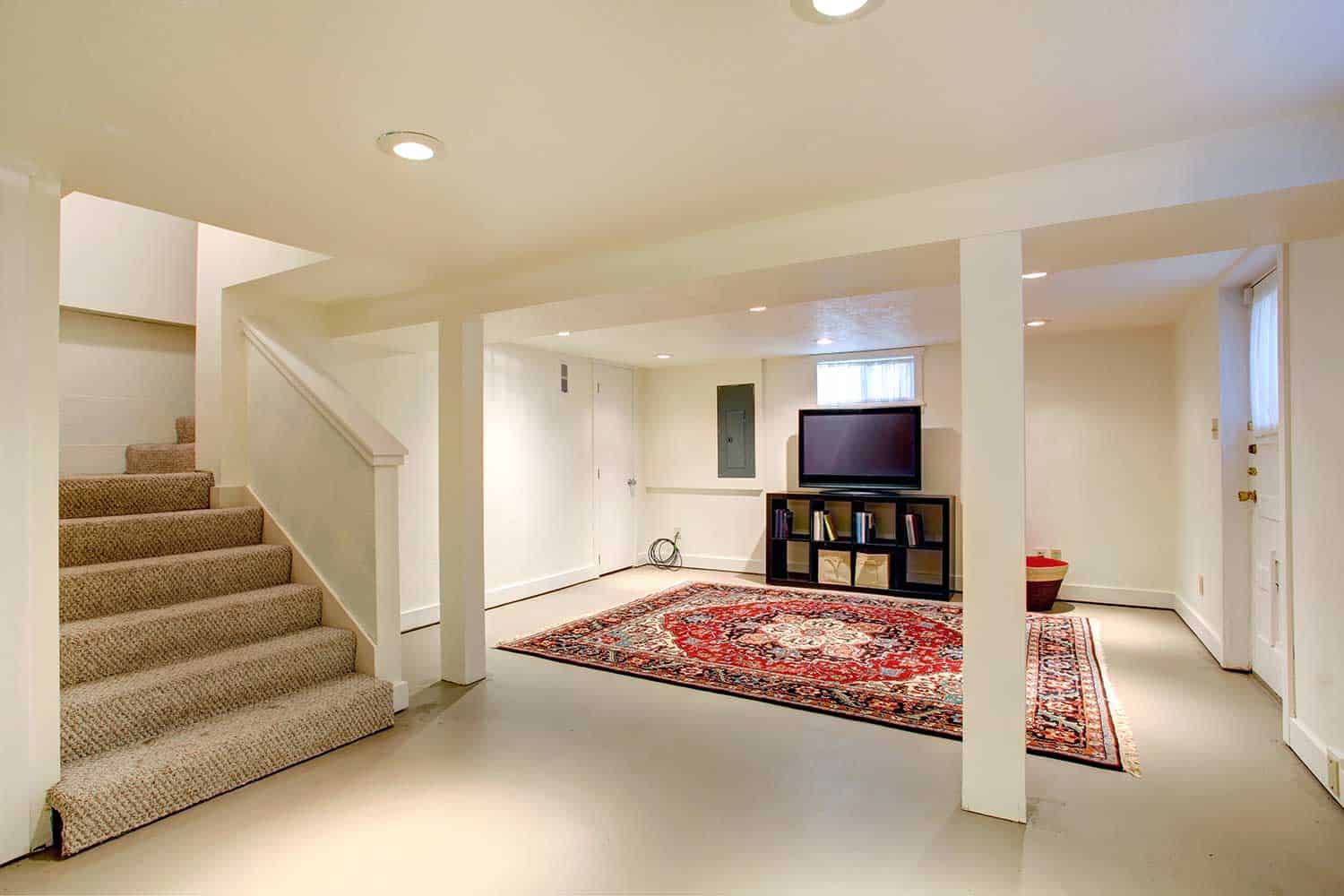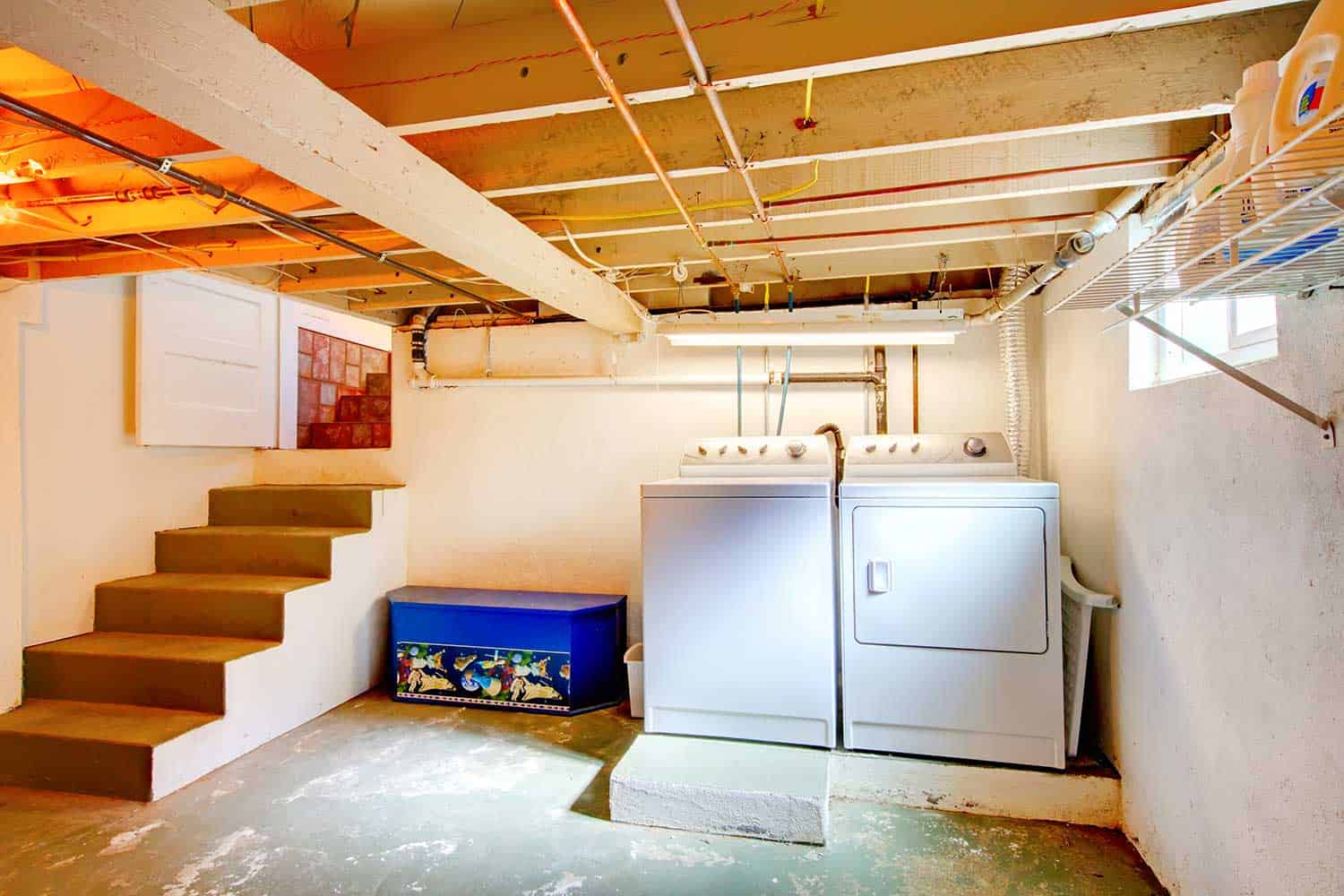If you are considering adding stairs to your basement, the first question you wonder is how much the installation will cost. Different factors come into play when installing new stairs in a basement. We've researched the cost associated with this type of project, and in this post, we will discuss them with you.
On average, installing stairs and a basement can range anywhere from $900 to over $3,000. Things to consider that can affect the cost include the type of wood used on the stairs, the number of stairs needed, and the current condition of the basement.
Installing new steps in a basement can be a simple project or a more involved one depending on the current basement setup. Continue reading to learn more about the factors to consider before installing basement stairs and the associated costs for labor and parts. We'll also cover whether or not stairs can increase a home's value.

Costs to Install Basement Steps

Adding a staircase to your basement can allow you to access the room with more ease, and it can also make the basement safer. If you have a staircase that is old or are purchasing a new home in which basement stairs have not yet been built, it's important to know what the cost will look like ahead of time. You'll usually find that these staircases will cost less money than staircases in more traffic-heavy or central parts of the home.
This is usually because the steps are made primarily for functional purposes as opposed to aesthetic reasons. That being stated, the cost can range greatly depending on your personal preferences and the condition of the basement. Let's discuss the cost factors to consider.
Tread Material
If your basement is not finished, concrete may be the most expensive option for installing the steps. Poured concrete can cost anywhere from $250 to $350 per stair tread. You can also use laminate or wood composite to install the steps. Laminate can cost anywhere from $10 to $30 per tread, while hardwood will cost anywhere from $30 to $50 per tread, depending on the type of wood. Keep in mind that you will incur additional costs when installing hardwood as it will need to be either painted or sealed with polyurethane.
For this reason, many homeowners prefer to go with either a composite or a laminate, which are less expensive alternatives to natural hardwood--not to mention they can be easier to install. You'll also have the option of installing stone, which is the most expensive option coming in at $100 to $250 per stairs.
Before deciding on the best wood for your basement steps, one of the first things to consider is the maintenance involved and the amount of traffic that the stairs will receive on average. For example, if the basement will not receive a lot of traffic, you may not want to install the most expensive tread type. And if the basement will receive a lot of traffic, it's best to go with that red that is both durable and easy to maintain.
Stair Railing
Another factor to consider is the installation of the stair railing. If you have more than two steps, these stairs will typically need a railing according to most building codes. The railing can be made of wood, metal, laminate, or composite. The cost for the railing and installation can range anywhere from $150 to $400, depending on the length of the stairs and the mounting location of the rail.
Number of Stairs
The depth of your basement will determine how many stairs will need to be installed. Naturally, the more stairs to be installed, the higher the installation cost will be. Also, if you plan to install curved stairs, spindle, floating, or L-shaped, you can expect the cost of the installation to increase. These steps will take more time to build than straight steps, and they can increase your installation cost anywhere from $800 to over $3,000.
Things to Consider Before Installing Stairs
Local building safety codes
Before contacting a contractor, it's important to know the building codes of your locale. These codes are set guidelines and restrictions that must be followed before you can perform any construction on your home, including installing basement steps. For example, some areas may require the steps to have a slope at a certain degree for them to be deemed as safe for the home. Keep in mind that if you don't follow the ordinances set by your locale, and an accident happens, you can be liable.
Required permits needed for the job
A contractor will tell you if a permit is needed for the job. However, the chances are that a permit won't be needed, given that these steps will be installed on the inside of the home, as opposed to the outside public areas. However, if a permit is needed, the contractor will likely include the fee for the permit in your total installation cost. A permit can cost anywhere from $450 to $600.
The most feasible staircase type
Take a look at your basement to determine the exact area you want the stairs to be located. Next, contact a builder to see if the type of stairs you want are practical, given the conditions and size of your basement. They'll also be able to tell you if your steps are feasible, given any restrictions listed by your local government. For example, if you want an L-shaped staircase and don't have enough room for the landing, this may not be the best staircase option.
Does A Staircase Add Value?

Yes, a new or recently renovated staircase can definitely add to your property value. Here are a few ways that stairs increase your home's value.
The stairs will be made of newer and better material
More often than not, staircases will be made of wood. Over time, even the strongest wood can be susceptible to wear and tear, causing it to crack, lean, and become unstable. Installing a new staircase can help upgrade the material so that the wood is aesthetically pleasing and much safer.
Better space usage
This is particularly helpful if you have an older home with a staircase located in a less-than-perfect floor plan. Building a new staircase will allow you to create one that is more practical for the size and shape of the space. This can allow for more movement and a better flow of traffic on the property. You can also choose to create a storage area beneath a new set of steps, adding more appeal to the home. When it comes to selling a property, a spacious room and quality layout will always be a plus.
Increased support the building's integrity
The more new solid structures in your home, the better. Having a staircase renovated or one newly installed can only improve the structural integrity of your home and make its overall layout more ideal for future renovations.
How Do You Make A Basement Staircase Safe?
There are a few different ways to make a basement staircase safe. Let's look at the top four options.
Good traction
Stairs that have solid traction are essential for any staircase, as slippery stairs can be hazardous. You can add covers to your stair treads if they're too smooth. Or, you can even cover them with sand, paint over them, and create your own homemade traction cover.
Contrasting paint
If your stairs are made of wood, and you plan to paint them, consider choosing contrasting colors for the risers and the treads. This will make the trades easier to see, especially at night time.
Tight handrails
Ensuring that the handrails on your staircase are tightly secured is essential to your home's safety and compliance with building codes. If the rails are wobbly or leaning, it's best to address this issue as soon as possible.
What Kind Of Wood Should You Use For Basement Stairs?
There isn't a certain type of wood recommended for basement steps specifically, as most hardwoods will suffice. However, the most common type of wood used is pine wood. For the most part, this is due to its low cost and easy installation advantage.
What Can I Use To Cover My Basement Stairs?
There are several materials that you can use to cover your stair treads. You can cover them using carpet, rubber, vinyl, or anti-slip covers made from resin composite.
Check out these rubber stair covers on Amazon.
Wrapping Things Up
Before installing stairs, it's best to consider the options available for the stairs, including tread type, location, type of stairs, and the number of steps that will be needed. And of course, it's always helpful to consult with a licensed contractor beforehand so that you may learn of any limitations within your requirements.
Before you go, be sure to check out our other posts:


